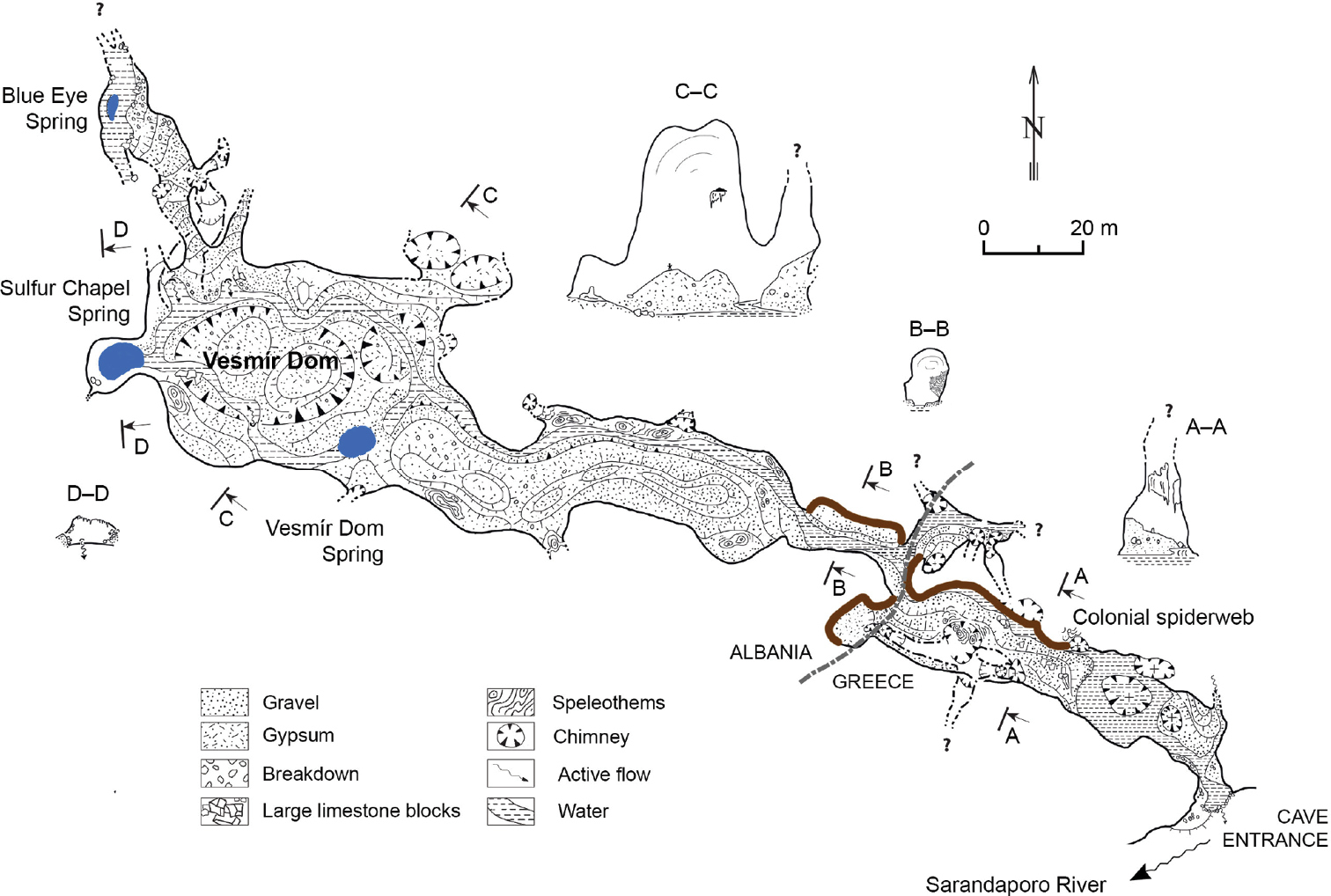In a dank cave below the Albanian-Greek border, scientists have uncovered a spider web that’s technically big enough to catch a whale. Stretching 106 square meters (1,140 square feet), the spindly structure is likely to be the biggest web of its kind ever found.
The rest of this article is behind a paywall. Please sign in or subscribe to access the full content.
You may (or may not) be pleased to hear that this is not the work of a single creature. The researchers looked at the density of arachnids in the colony and estimated it was formed of roughly 111,000 spiders. It wasn’t just made by a single species, either.
Genetic samples taken from the web suggested it was home to around 69,000 domestic house spiders (aka barn funnel weavers) and more than 42,000 Prinerigone vagans. The study authors note the discovery represents “the first documented case of colonial web formation in these species,” which don’t typically interact on the surface.
The discoveries come from Sulfur Cave, a winding cavern that meets the outside world in northern Greece but features deep sections under southern Albania. Together with two nearby caves, it forms an underground maze of huge chambers and winding tunnels carved into a thin strip of limestone.

The layout of Sulfur Cave, where scientists discovered the world’s largest spider web.
It was carved out by the Sarandaporo River slicing through this rock to create what’s now called the Vromoner Canyon (the name Vromoner literally means “smelly water” in Greek). Deep inside the cave, natural springs bubble up with sulfur-rich water that smells like rotten eggs or an angered skunk. The sulfidic stream runs through the whole cave and finally spills out into the Sarandaporo River at the entrance.
This strange, sulfur-rich environment has created a peculiar ecosystem that’s sustained by chemoautotrophy. Most ecosystems depend on photosynthesis, where plants and algae use sunlight to harness energy, thereby starting the food chain. In Sulfur Cave, however, the foundation is made up of microorganisms that use chemical reactions to turn inorganic substances such as sulfur compounds into energy.
Large numbers of sulfur-loving bacteria create a sticky biofilm that covers parts of the cave. This slimy layer is the main food source for tiny midge larvae and flies, which in turn are the favorite meal of the many spiders living there. By no coincidence, the bulk of the colossal web is found in a portion of the wall where the team noticed “an unusually dense swarm of small chironomid flies.”
Thousands of spiders are the architects and builders of the Sulfur Cave web, but other species of spider are capable of creating gigantic webs by themselves. The most impressive is Darwin’s bark spider, a native of the lowland forests of eastern Madagascar. Although coin-sized, they construct orb webs that span areas from 900 to 28,000 square centimeters (140 to 4,340 square inches), reaching lengths of up to 25 meters (82 feet) across bodies of water.
The study is published in the journal Subterranean Biology.
Source Link: World's Largest Spider Web, Created By 111,000 Arachnids In A Cave, Is Big Enough To Catch A Whale